Aluminum die casting is a manufacturing process that involves the injection of molten aluminum alloy into a mold under high pressure. The molten aluminum is injected into a die, which is a mold made from two halves that are clamped together. The cavity inside the die is the exact shape of the part to be produced. The high pressure injects the molten metal to fill the die cavity, creating a precise and accurate desired shape of the part.
This manufacturing process offers many advantages over other aluminum casting processes because of its steel mold. It can produce complex shapes with high precision and consistency, high mass production rates and efficiency, and the ability to create parts with excellent strength and durability. Additionally, aluminum alloys are lightweight and have good corrosion resistance that can be easily recycled, making them a popular choice for many applications.
Die casting uses different die-casting machines to produce different types of metal parts. Hot chamber die-casting machines are used for casting parts with low melting points alloys, such as zinc and magnesium. As for aluminum die casting, the process uses a cold chamber, which is used for casting parts with high melting point alloys.
Advantages of the Aluminum Die Casting Process
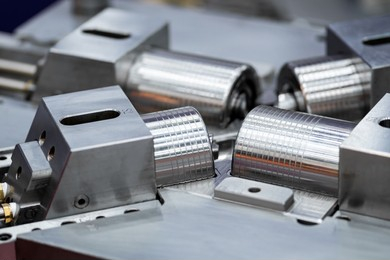
The aluminum die-casting process is crucial in modern manufacturing, providing a reliable and cost-effective solution for producing high-quality parts in various industries.
Precision Casting
Die-casting machines use a lubricant to prevent sticking and ensure smooth casting. Then, the molten aluminum is injected into the die at high pressure, filling the steel dies and taking on the shape of the mold. The high pressure ensures that the aluminum fills every detail of the die cavity, resulting in cast aluminum with a high degree of accuracy and precision.
After the die-casting parts have solidified, the die halves are opened, and the cast aluminum parts are ejected. The casting is then trimmed and finished to meet the desired specifications. This finishing process may include sandblasting, polishing, or painting, depending on the application of the die-cast parts.
High Production Efficiency
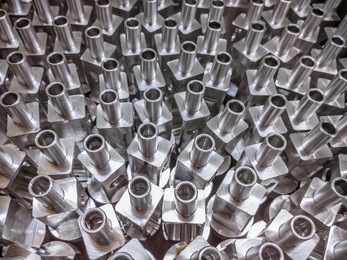
Die casting produces cast aluminum with high production efficiency due to the nature of the process and the die-casting machine used.
The use of high pressure allows the liquid metal to fill the metal mold quickly and uniformly, resulting in high-quality metal parts with excellent dimensional accuracy and surface finish. Additionally, using a reusable die means that once the die has been manufactured, it can produce many parts, reducing the cost per unit and increasing production efficiency.
Furthermore, die casting is an automated, easily monitored, and controlled process. This level of control ensures that the casting process is consistent and repeatable, resulting in fewer defects and scrap parts.
Die casting is also a fast process, with cycle times that range from seconds to minutes. This allows for high volumes of parts to be produced quickly and in a near-net shape, making it an ideal process for industries that require large quantities of parts.
Minimal Secondary Operations
Because die casting can produce parts with complex shapes and intricate details, eliminating the need for multiple parts or assembly. This reduces the number of parts that need to be produced and assembled, simplifying the production process and reducing the likelihood of errors or defects.
Die casting can also produce aluminum castings with tight tolerances and precise specifications, reducing the need for additional operations such as grinding or polishing. This improves the overall quality of the part and reduces the time and cost associated with secondary operations, compared to sand casting, where the sand mold creates a rough metal surface.
Convenient for Aluminum Castings With Thin Walls
Die casting suits aluminum castings with thin walls due to extreme pressure and fast filling capabilities. The molten aluminum is injected into the die at extreme pressure, filling the mold quickly and uniformly, resulting in thin-walled castings with excellent dimensional accuracy.
The injection process also ensures that the molten metal flows into all the intricate details of the metal mold, allowing for the production of complex shapes and features in the thin walls.
Die casting allows for smaller and lighter molds, which can withstand the high temperatures of molten aluminum.
Suitable for Complex Shapes
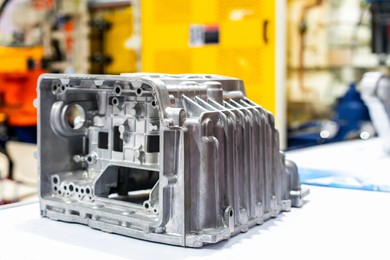
Die-casting molds are designed using computer-aided design (CAD) software and advanced engineering techniques. Using CAD software, the mold designer creates a 3D mold model. The model includes all the mold details, such as the parting line, gating system, cooling system, and ejector system.
Once the 3D model is created, the mold designer performs a simulation to test the mold’s performance. The simulation includes a virtual filling and solidification analysis, which helps identify defects in the casting process.
In addition, the computerized die-casting machine allows for precise monitoring and control of the casting parameters, such as temperature, pressure, and flow rate.
Uses of Aluminum Die Castings
Aerospace Industry
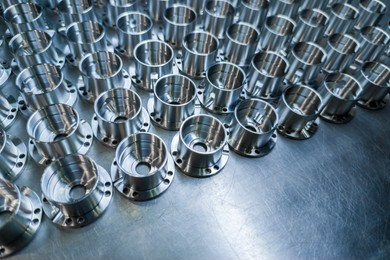
Aluminum is a lightweight metal, making it an ideal choice for aerospace applications where weight reduction is critical. The use of lightweight materials can help fuel efficiency and increase the payload capacity of aircraft.
Aluminum casting is also corrosion resistant, making it an ideal material for aerospace applications where exposure to harsh environments is common. Using aluminum die castings can help reduce maintenance and replacement costs over the aircraft’s lifetime.
Automotive Industry
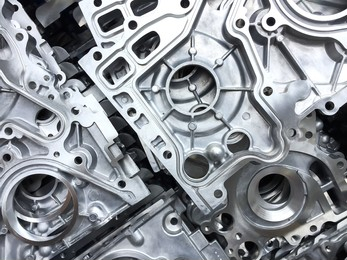
Although lightweight, aluminum is also a strong material, making it suitable for high-stress applications in the automotive industry. Aluminum die castings can provide high strength-to-weight ratios, allowing lightweight yet strong components to be designed.
Industrial Components

Aluminum die castings can be used in various applications, including machinery, pumps, compressors, valves, and other industrial components. The versatility of aluminum die castings allows for producing intricate shapes and thin-walled parts, making it possible to create parts with high precision and accuracy.
Its excellent thermal conductivity allows it to dissipate heat quickly and efficiently. This makes it an ideal material for industrial components that operate at high temperatures or require thermal management.
Characteristics of Aluminum Die Casting

Good Corrosion Resistance
Aluminum alloys are naturally corrosion-resistant due to the formation of a protective oxide layer on the material’s surface. When aluminum is exposed to air, it reacts with oxygen to form a thin layer of aluminum oxide on the surface of the material. This oxide coating is highly resistant to corrosion and provides a barrier that protects the underlying material from further oxidation and corrosion.
Wear Resistance
Aluminum alloys are not naturally wear-resistant, but they can be modified with certain alloying elements and surface treatments to improve their wear resistance.
One way to improve the wear resistance of an aluminum alloy is to add elements such as copper, zinc, and magnesium to the alloy. These elements can increase the hardness and strength of the material, making it more wear-resistant.
Thermal Conductivity
Aluminum has a very high thermal conductivity, meaning it can transfer heat quickly and efficiently.
When aluminum is alloyed with other metals, such as copper, magnesium, or silicon, its thermal conductivity may be slightly reduced, but it remains relatively high compared to other materials. Additionally, aluminum alloys can be engineered to optimize their thermal properties for specific applications by adjusting the alloy composition or utilizing different manufacturing processes.
Strength to Weight Ratio
Aluminum alloys have an excellent strength-to-weight ratio due to the unique properties of aluminum and the way it can be alloyed with other metals to create a strong and lightweight material.
Aluminum is commonly alloyed with other metals, such as copper, zinc, or magnesium, to increase strength and stiffness. These alloying elements strengthen the aluminum matrix, allowing it to bear greater loads while maintaining light weight.
Excellent Mechanical Properties
Aluminum castings have excellent mechanical properties, including high strength, ductility, toughness, and fatigue resistance.
Its mechanical properties depend on various factors, such as the alloying elements, manufacturing processes, and heat treatment. The addition of alloying elements such as copper, zinc, magnesium, and silicon can increase the strength and hardness of the aluminum matrix, improving its mechanical properties.
Electrical Conductivity
Aluminum is a highly conductive metal with a conductivity of about 60% of that of copper, which is the most commonly used conductor in electrical applications. The electrical conductivity of an aluminum casting is a function of both the purity of the aluminum and the specific alloy used.
The electrical conductivity of aluminum alloys can be further improved by alloying with other metals, such as copper or magnesium. These high-strength alloys are commonly used in electrical conductors, power transmission lines, and electrical contacts.
Why Choose Die Casting Over Other Casting Processes
Compared to other casting processes, such as the sand casting process, permanent mold casting, or investment casting, die casting is faster and more efficient, making it more cost-effective for producing high volumes of parts. Die casting can also produce more complex shapes with greater detail, which is essential for consumer electronics and medical equipment industries.


